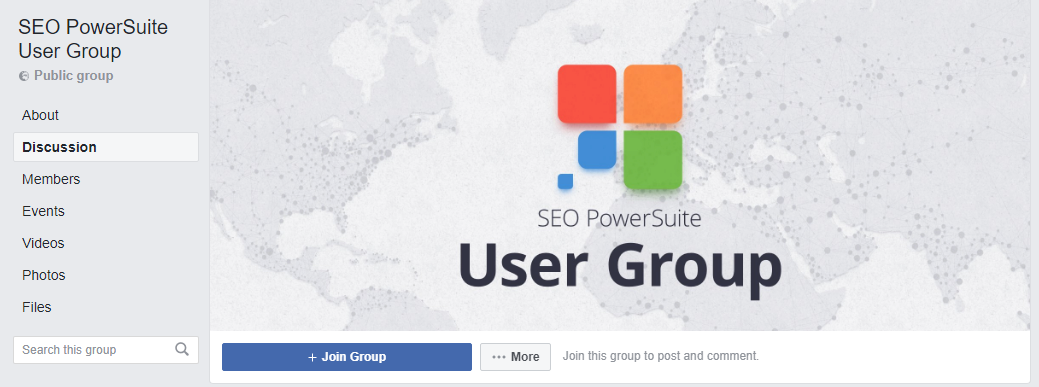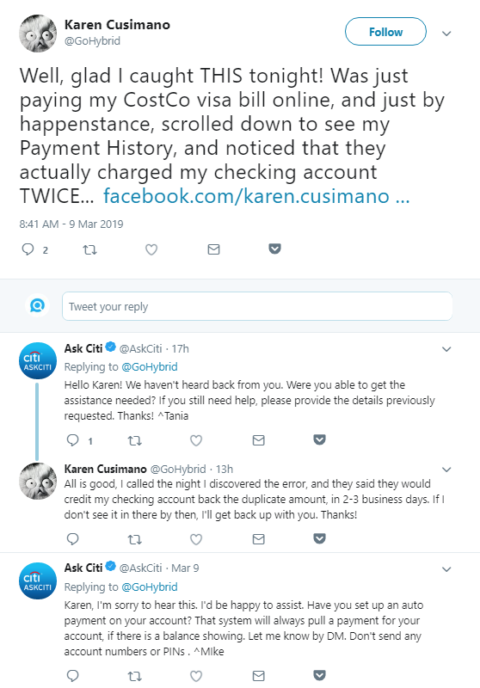Social media was created with the idea of dialogue in mind, so it’s not surprising that more and more users choose it as the main channel of communication with brands.
According to a study by J.D. Power, 67 percent of consumers have used a company’s social media site for servicing; therefore, having a social customer support strategy is not just a matter of preference, it’s a must.
Successful businesses meet their customers where they are, and there is a very high chance that they are on social media, trying to contact your company.
Nevertheless, social media customer care is oftentimes overlooked and neglected.
Many businesses leave handling complaints on social media to social media managers, which may lead to throwing a client in the “I’ll-pass-you-to-our-customer-service” hell cycle.
There’s nothing inherently bad in letting your social media team manage customer service on social, but they will need some training to be able to manage customer care issues correctly.
The important caveat that makes social customer support stand out is that it is never just that.
Many times it’s happening in the public eye, therefore, your social customer service strategy affects your brand image more than ever.
In that sense, social customer service gives you opportunities for community building and raising brand awareness. And it would be a mistake to miss out on it!
I for one appreciate that you were quick to respond in order to try to right the situation. Take care of our boy Steve!
— Andrus Whitewing (@AndrusWhitewing) March 6, 2019
When the former football star and the hero of ‘Gleason’ documentary Steve Gleason called out Southwest Airlines on the lack of training in dealing with people with disabilities, they responded immediately. Gleason’s followers took notice of their reply.
The process of setting up social support channels involves two stages: preparation and the workflow itself.
In this article, we’ll go through all the steps of building a social customer service strategy from scratch and answer the frequently asked questions about social customer support.
Step 1: Analyze the Past Experience
Any great strategy starts with research. Analyzing your current customer care activity can help you identify pain points, “rush hours,” and your clients’ demands and expectations.
Moreover, your social media team can also give you valuable insights: do you already have established communication channels with your audience that are used for support issues (Instagram DMs, Twitter)?
Is there a need for a separate social media community designated to customer care? These and other questions can only be answered by the people who manage social media for your brand.
Step 2: Determine the Channel & the Team
Decide if you want to involve a person from your customer support team or a social media manager.
The answer will depend on the training process: will it be easier and faster to train your social media manager to handle customer service issues or vice versa?
Enterprise-level companies typically have a designated social support team which often works from a separate social media handle: for instance, @SpotifyCares or Apple Support.
However, for a smaller business, it might not be the strategy that makes sense.
Unless you’re constantly getting an influx of queries from customers on social media, I don’t recommend setting up separate profiles for customer care. Multiple profiles can be confusing to customers; besides, using your main profile to engage with customers helps raise brand awareness.
A great alternative would be creating a place for a community to interact with a brand and each other (for instance, a Facebook or a LinkedIn group) and checking up on it regularly.

Step 3: Create Guidelines
Once you have the team and insights in place, it’s time to create customer service guidelines (i.e., the rules that will guide your social customer support specialist(s)).
Here are some of the questions that you might want to address:
- What is your desired response time?
- What tone of voice should you take?
- What constitutes a social media crisis and when should managers be alerted?
- Will you respond to positive feedback and how (liking, commenting, reposting)?
You can even go further and create a template with answers to common queries — or borrow them from your customer support team. Just make sure that the tone of the response is consistent with your brand image.
Of course, babe! Return the romper to our warehouse: 3751 Seville Ave Vernon, CA 90058.
— FashionNovaHelp (@FashionNovaHelp) March 8, 2019
Fashion Nova took on a playful and informal manner of communication.
Step 4: Choose What to Automate
It can be quite challenging to stay on top of all the social inquiries and respond to them in due time. That’s why many social support reps use tools and bots.
There are two major issues that automation can tackle:
Making Sure You Respond to Every Mention
Negative reviews and customer care issues can be scattered all over social media, from Twitter to various subreddits.
Sometimes, they are not directed at your brand, but even when they are, people might misspell your social media handle or simply forget to tag you.
@tecso I have to say, not a surprise mixed meet in a ‘beef’ burger. I’ve had rotten fresh chicken from you too #corporatebullies
— Sarah Jane (@sarahwearsblue) January 17, 2013
Even though this customer tried to tag Tesco, they misspelled the brand name, so Tesco never saw her tweet.
In fact, research shows that only 3 percent of brand mentions actually use a Twitter handle, opting for the company or product name instead.
Monitoring your brand name and including misspellings can help you with that. You can use Tweetdeck and Google Alerts or a social listening tool like Mention, Hootsuite, or Awario (disclosure: I work at Awario).
These tools will organize all the mentions of your brand across multiple social networks in an easy-to-navigate feed, so you can take care of them one by one.
Respond to Mentions Quickly
According to Conversocial’s report ‘The State of Digital Care in 2018’, one-third of customers expect brands to respond in less than 30 minutes.
Salesforce also reported that 80 percent of consumers felt that an instant reply to their queries had a moderate to major influence on their loyalty to the brand.
Obviously, it’s not possible for a human to stay alert 24/7. You can use a social listening tool to get mentions from several platforms in one feed in real time, but there are still weekends and after-work hours.
Luckily, there are robots which don’t need to sleep and can work all the time!
Facebook already offers automated responses for when you’re out of the office: they notify your customers when you’ll be back online.
Moreover, you can automate any part of your communication – Facebook comments, Facebook mentions, Twitter mentions, DMs on Twitter and Instagram – with the help of bots.
There are a lot of ways to automate your communication: go with an integration tool like IFTTT or Zapier, choose a tool that specializes in one platform, or create your own bot.
However, don’t automate beyond what’s absolutely necessary: customers are not always happy to get a message from a robot.
@breather I did! That’s the only way I found out it changed. I thought the app made an error. Because again… You gave us NO NOTICE! And now you give a ROBO tweet in response. Lol wow!
— Rae (@Rae16670641) January 22, 2019
Step 5: Analyze Complaints
This step is sometimes omitted from brands’ social service strategies, even though it is extremely important. Understanding where customer dissatisfaction comes from enables you to improve your product.
For example, Samsung uses social listening not only to directly assist their customers but also to monitor all the new product launches to identify weak points.
“When we first launched the S8, I was asked in a meeting whether the red tint on the display was a ‘thing’. I typed in “Samsung red tint” [on Crimson Hexagon’s platform] and confirmed that yes it was, and we were soon able to deploy a software update that got rid of it.” says Amy Vetter, Senior European Digital Insights Manager at Samsung.
Social Customer Support: Frequently Asked Questions
Should I Answer ALL the Mentions?
That depends on your brand! If you work for a huge company, it’s an unrealistic goal to reply to every single mention of your brand.
However, if you’re a smaller brand, responding even to positive mentions can raise your visibility and help with community building.
Yes, girl you deserve it!
— HelloFresh US (@HelloFresh) March 10, 2019
The customer didn’t have a support query, however, HelloFresh still responded.
Besides, customers that receive responses from brands on Twitter are willing to spend up to 20 percent more and are 30 percent more likely to recommend the brand.
Here’s the standard workflow for replying to customers:
- Reply to DMs.
- Reply to negative mentions (assuming you use a social listening tool to analyze sentiment).
- Reply to inquiries about the company/product.
- Reply to other mentions (compliments, showing off the product, etc.).
- Check the community platform (a Facebook/LinkedIn group or a subreddit).
- Repeat.
When Should I Ask Customers to PM/DM Me?
Not every conversation on social media has to be public: a lot of customer support interaction happens in private messages of a brand’s social media accounts.
However, it’s always better to minimize the hustle for your customer, so changing the communication channel should be both necessary and easy.
Pivoting to private messages works best when you need customer’s personal information (email, order number) or a thorough explanation of the issue they are experiencing to assist them.
Make sure you notify a customer publicly after sending them a private message. This will also show anyone else who stumbles upon the conversation that you didn’t just ignore the request. A simple “we sent you a message with more details, please check” will do.
We certainly understand your concern, getting charged for an app you didn’t want to use. Let’s talk in DM: https://t.co/GDrqU22YpT
— Apple Support (@AppleSupport) March 11, 2019
Note that you should put all the effort into avoiding changing the platform completely: it’s social support after all, so you should be able to help your customer on social media.
When customers use social media to complain, it’s often because a company has already failed to assist them through conventional customer service channels, so directing them back to email will only annoy them even more.
Just what I wanted to do, call while sick with laryngitis. Good times
— Jen Glazier (@jennifergla) March 5, 2019
Should I Introduce Myself?
Nobody likes talking to an anonymous brand or Twitter handle.
According to the report from Salesforce, 69 percent of respondents pointed out the importance of personalized customer care, and how can you be personal without introducing yourself?
Admittedly, replying to every message and mention you get with “Hi, I’m Jared!” might get a little bit annoying. A good tactic is to add your initials or a first name at the end of a message.
Hey there! Ack, really sorry for the trouble here, I’m finding the same thing in my testing as well. I’m going to escalate this to our team to see if we can figure out the issue! -Todd
— Buffer (@buffer) March 11, 2019
Should I Follow Up?
This might seem like a redundant question, but I wanted to remind you once again: always follow up if the problem isn’t completely solved.
When you can’t assist a customer right away, the best practice is to set a deadline for following up with updates, depending on the urgency of the problem.
It’s also a good idea to follow up if a customer didn’t respond initially: some brands will move on after sending one reply. However, in the rapid stream of social media it’s quite easy to miss one notification, so it’s better to message them once again.

Conclusion
Social media has become one of the most popular platforms for customer care – whether you like it or not.
To make your customers happy and get additional bonuses of raising brand awareness, you need to quickly respond to all the mentions and messages you get in a manner that complies with your branding.
More Resources:
- Top 9 Benefits of Social Media for Your Business
- Why Social Media Marketing Is Crucial for Your Local Business
- Top 5 Reasons Why You Need a Social Media Manager
Image Credits
All screenshots taken by author, March 2019





